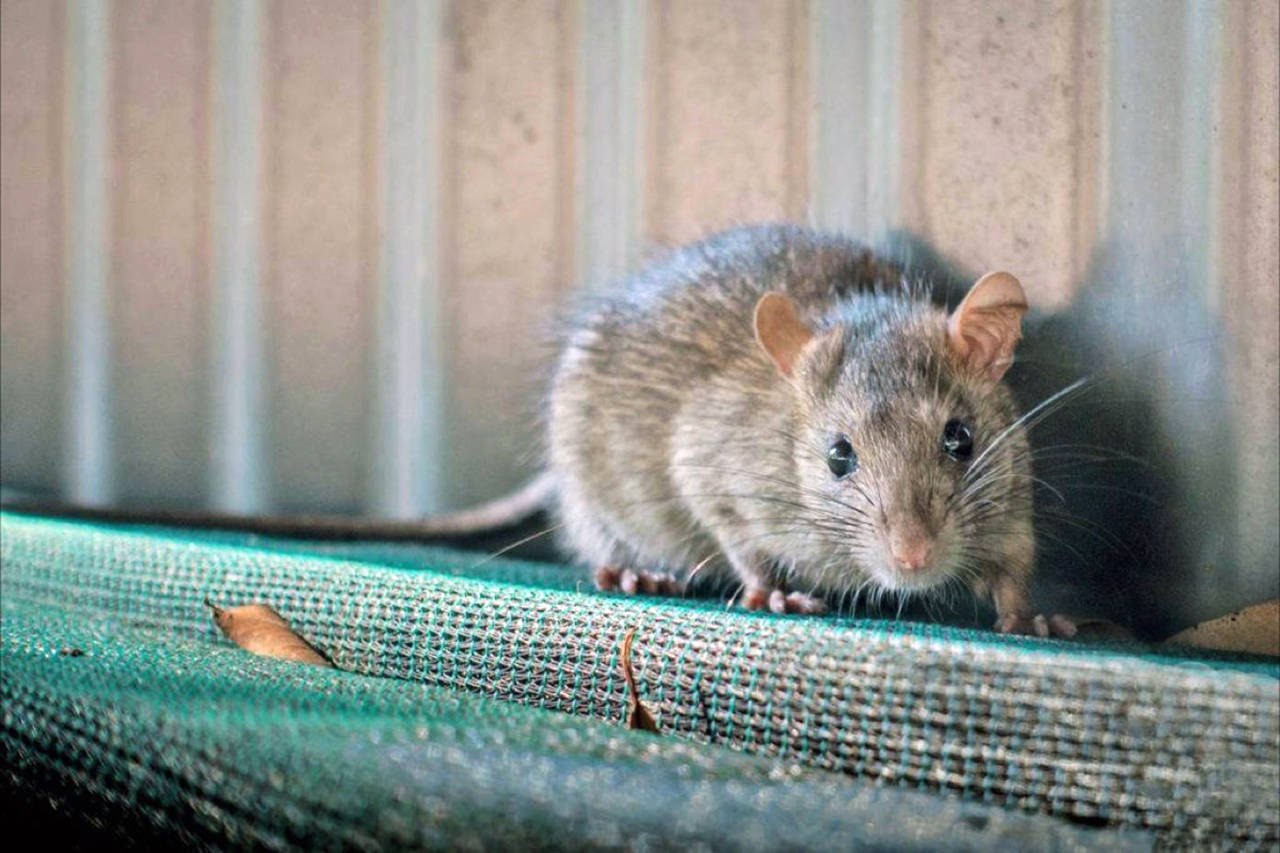There’s a literal rat race happening right now in the Puget Sound region as rodents thrive alongside the growing human population.
Rats are not native to the region and are believed to have arrived with the earliest Northwest settlers. Rats are commensal creatures, which means they largely depend on living in close proximity to humans.
According to Kurt Trefts, co-founder of Cascade Pest Control and a rat expert by trade, rats likely came to the Puget Sound on the ships of some of Seattle, Tacoma and Olympia’s earliest settlers and traders.
Trefts called people great “enablers” of rats. The large warehouses, canneries and other industrial facilities that made the Puget Sound such an important region of shipping and commerce proved to be more than sufficient shelter for rats to hide, eat scavengable scraps left by people and breed quickly.
Trefts said rats are adaptable scavengers that can sustain themselves on garbage waste and spilled grease, exploiting the sloppy habits of people living in a growing urban sprawl.
Trefts said as people continued to develop farms, towns and cities among the wooded forests surrounding the Puget Sound, rats have followed, enjoying the “bounty” that people provided for them.
Over the years, pest controllers began to notice the same thing.
Trefts has been working in pest control in the Puget Sound region for over 40 years. Year-by-year, he has noticed the changing trends of pest populations and prevalence based on the kind of service calls he was responding to across the region.
“In the ‘70s and ‘80s, the primary problem was carpenter ants,” Trefts said. “Rats were usually pretty confined to the waterfront areas.”
Over time, he and other peers in his industry began to notice a change.
“We realized that control of rats was more intensive,” Trefts said. “It became the main thing. It was obvious that it was widespread.”
He said semi-rural communities, like Bellevue, in which suburban communities were built wall-to-wall next to one another, provided shelter and sustenance for the highly adaptable rodents.
Trefts said the newly built homes, with dark rat-cozy spaces in the walls and crawl spaces, provided “perfect” nests for families of rats. He said simple overlooked details like overfilled birdfeeders and grease from barbecues were just enough for rats to sustain themselves.
Rats have even been noted as having eaten dog droppings from a residential lawn.
Trefts and his peers began to notice they could work to keep the rats out of a home, but not the neighborhood, because they were “really well established.”
Trefts believes that the Puget Sound region has more rats per capita than New York City, mostly because New York has a higher population density and vertical skyrises that can shelter rats.
Near the end of 2020, national pest control company Orkin ranked Seattle as the 12th rattiest city in the country.
Trefts knew that rats were rarer in more eastern inland urban communities like Spokane and Boise, so he wondered why the rat species in the Puget Sound were so pervasive. His theory was that the “unique” climate and geography of the Puget Sound offered ecosystems with food and shelter that allowed the rats to survive independent of people.
He believes that wetlands and greenbelts surrounding the pockets of human development offer just “enough in the wild that they can live on,” breaking the commensal mold in which rat populations and colonies were believed to be almost entirely dependent on people and their dwellings.
Trefts said even the marine intertidal zones of the Puget Sound offer great scavenging for rats with the kelp, dead animals and small marine creatures that can easily be found on the beach.
Effect on ecosystem
If rats have become an invasive species in Puget Sound ecosystems, how is it affecting other native species?
Dave Pehling, zoologist and researcher at Washington State University, said it is difficult to fully measure the extent to which rats have established themselves in native ecosystems because comprehensive population data does not exist. However, he did say it was more than possible for rat populations to disperse among woodlands and greenspaces.
He said wetlands and seashores can be rich in food for rats. He said rats can be a “huge problem” for wetland ecosystems in which they may prey on native species if needed.
He said roof rats have been known to get into birds’ nests to prey on them, and will even eat native mice.
“They can live on anything,” Pehling said.
Even though Pehling admitted to the possibility of widespread invasive rats establishing themselves in local ecosystems, he maintained that rat populations are largely a human-driven problem.
“Humans are sloppy. They throw away nearly half their food,” he said.
With Americans collectively throwing out roughly 40 percent of the food they have grown, raised or prepared, Pehling said the rat problem could be dependent on whether people “clean up their act.”
Justin Bush, executive coordinator for the Washington Invasive Species Council, admitted that there seems to be a data gap that exists when it comes to the population dynamics or prevalence of invasive rats in native ecosystems.
He added that while the Washington Invasive Species Council has not recognized or focused on invasive rats at this point in time, that does not mean that they won’t examine the issue in the future.
This story originally appeared in the Bothell-Kenmore Reporter, a sister publication to The Herald.
Talk to us
> Give us your news tips.
> Send us a letter to the editor.
> More Herald contact information.

























